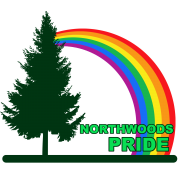LGBTQ is often used as an umbrella term for the whole gay/queer community, but there are many letters that are not included in this acronym and tend to go unnoticed.
QUEER
The Q in LGBTQ can be especially misunderstood. It’s often used as a shorthand for both “questioning” and “queer.” This way, people who are still questioning their sexuality or gender can feel included and welcomed in the community, despite not quite knowing their identity yet.
Queer is also a term many people use to define themselves, and its definition is nebulous and difficult to pin down for this reason. For some people, queer can mean attraction to many different genders; for some people it can mean their own gender is “queer” and can’t be defined or explained with other words. Queer is often an all-encompassing identity, a comfort for people who find that their experiences of gender and attraction are difficult to explain with more conventional or well-known words.
Common definitions of queer include “people. . . whose sexual orientation is not exclusively heterosexual,” or “queer, or more commonly genderqueer, [is used] to describe their gender identity and/or gender expression.” It can also be defined as “a word that describes sexual and gender identities other than straight and cisgender.”
Still confused? That’s understandable. Many people have written about their experiences of being queer; reading about their experiences can be a good place to start if you are struggling to understand queerness.
“What Does It Really Mean To Be Queer?” article by Sophie Saint Thomas
“3 Differences Between the Terms ‘Gay’ and ‘Queer’ — and Why It Matters” article by Hari Ziyad
“What Does Queer Mean Anyway?” article on minus18.org


Asexuality and Aromanticism
Asexuality is a sexual orientation defined as having a lack of sexual attraction to any gender. Due to lack of education and visibility, asexuality is not very well known, and many asexual people can feel lost, misunderstood, or “broken” because of it.
Asexuality, like many other sexualities, can be understood as a spectrum. Some asexual people identify as demisexual, meaning they very rarely experience sexual attraction, and only experience it after they have an emotional connection with a person. Others may identify as gray-asexual, meaning they don’t often experience sexual attraction, or when they do, it is not very strong.
Aromanticism is similar to asexuality. It is a romantic orientation in which someone does not feel romantic attraction to any gender.
Some people are both asexual and aromantic, but not all are. For example, someone could be aromantic and bisexual, meaning they are not romantically attracted to people but are sexually attracted to all genders, or asexual and biromantic, meaning they don’t experience sexual attraction but are romantically attracted to more than one gender. There are many different combinations!
Asexuality Resources:
• The Asexual Visibility and Education Network, or AVEN (asexuality.org) provides education about asexuality and resources for asexual people.
• This comic by Adri Tibbs on asexuality explains and debunks many common myths about asexual people.
• An article from Reilly Smith discussing common misconceptions about asexuality.
• The Trevor Project (thetrevorproject.org) has a page about asexuality, including definitions and frequently asked questions, as well as how to support asexual people and links to further reading and resources.
• What Is Asexuality? (whatisasexuality.com) is a site that answers many questions about asexuality, and advice for people who are trying to figure out if they are asexual.
• Asexuality Archive (asexualityarchive.com) has an entire book all about asexuality available to download, as well as links to places you can purchase a paper copy.
• GLSEN (glsen.org) has an article with 10 tips for how educators and GSA advisors can support asexual students.
• The Safe Zone (thesafezoneproject.com) has an article about how to promote asexual inclusivity.
• This article on Everyday Feminism has advice on how to support a friend who comes out to you as asexual.
Aromanticism Resources:
• This page on the AVEN Wiki has a list of frequently asked questions about aromanticism.
• This short article on the AVEN Wiki gives a concise definition of aromanticism.
• An article on them.us by Logan Plonski goes over 7 facts you should know about aromantic people.
Two-Spirit
“Two-Spirit” is a term used by Native American and Indigenous people in North America to describe a uniquely Native concept.
The term refers to a concept that many Native cultures have for gender nonconforming people or a third or fourth gender. It is not necessarily synonymous with “gay Native” or “LGBTQ Native,” as Two-Spirit people often have a cultural or spiritual role in their community.
Many different Native cultures have their own word for Two-Spirit people.
“Two-Spirit” as a term originated in in 1990 at the third annual Native American/First Nations gay and lesbian conference in Winnipeg, Manitoba, Canada, as a replacement for berdache. “Berdache” was a derogatory term applied to gay or queer Native people, invented by Europeans, which was incorrectly perpetuated by anthropologists for a long time before the term Two-Spirit was coined.
To learn more about Two-Spirit people, check out some of the following resources:
• “Two-Spirit” Wikipedia article
• NCAI (National Congress of American Indians) presentation on Two-Spirit people (PDF)
• Article from Slate about Susan Allen, a Minnesota Representative, who is lesbian and two-spirit
• Article about Dr. James Makokis, a two-spirit doctor in Alberta, Canada who treats transgender patients
